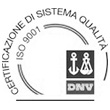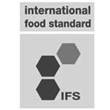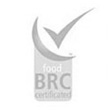Parsley
(Petroselinum sativum Hoffm)
Parsley – Ingl., Petersilie – Ted., Persil – Fr, Prixel – Sp., Петрушка - Russ.
Parsley belongs to the Umbelliferae family and is traditionally grown in Central and South Europe, England, in Africa, East Asia and India.
It can reach 80 cm height, and its flowers are white or greenish.
It is used as an aromatic herb and for its healing properties.
leaf parsley 1 mm, 2 to 4 mm and powder, sun-dried or mechanically-dried, from Egypt and Hungary.
Food Composition
The leaves of parsley are rich in vitamin C, beta-carotene, iron and folic acid.
- The fruits of parsley (commonly called seeds) contain 2 to 7% of essential oil composed apiolo, and terpenti miristina. Its essential oil is used to flavor wines, cheeses and other dairy products
- Its roots contain 88% water, 3% carbohydrate, 3.1% protein, l ‘1.5% of mineral salts and a little essential oil.
Culinary Use
Parsley is one of the most widely used herbs in cooking along with basil leaves and salvia officinalis (sage), for both decorating and to flavoring dishes. The use of parsley “hedgehog”is very common in Anglo-Saxon countries, mainly as ornamental garnish.
Healing Effect
Parsley is an officinal herb, it is used to stimulate appetite,is a digestive aid and is an excellent natural nutrient. It is a mild diuretic and has a spasmolytic effect. Its essential oil is an excellent natural remedy against the harmful effects of some carcinogens such as benzopyrenes contained in cigarette smoke, or charcoal grilled food.
Its high content of vitamin C helps prevent osteoarthritis and polyarthritis.
Preservation
Dried parsley must be kept in a cool, ventilated, poorly lit and dry place.





